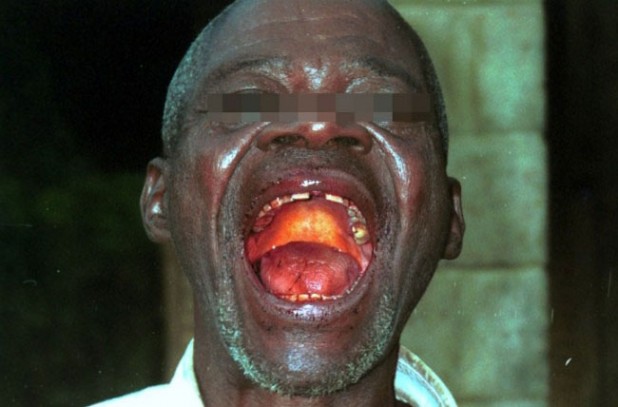The New Observer
October 17, 2015
The danger of sexual contact of any sort with Africans has been highlighted once again with the first report of a sexually-transmitted Ebola infection—and a report from Italian doctors warning of an “Ebola Trojan Horse” entering Europe via African invaders.
The first registered case of Ebola virus transmission via sex was reported in the New England Journal of Medicine (October 14, 2015), titled “Ebola RNA Persistence in Semen of Ebola Virus Disease Survivors — Preliminary Report.”
In that study, a woman in Liberia contracted the deadly Ebola virus after having sexual intercourse with a male survivor of the disease who had been declared Ebola “negative” in early October 2014.
The study said that the main mode of transmission for the Ebola virus is “direct contact with the blood or body fluids of a person with Ebola virus disease (EVD) or from the body of a person who died from EVD. However, [the] Ebola virus can persist in the body fluids of survivors during convalescence, which may result in transmission of the virus. The potential for the persistence of Ebola virus in the semen of male survivors raises concern regarding the possible transmission of the virus to sexual partners.”
Previous research had indicated that the Ebola virus was present in the infected semen of survivors for “only” 82 days, but in the test case in question, the period has been extended to 199 days after the onset of his symptoms.
“The possibility that infectious Ebola virus could persist in the semen of survivors approximately 6 months after the onset of illness prompted the World Health Organization (WHO) and the Centers for Disease Control and Prevention (CDC) to revise their guidelines regarding the length of time that survivors of EVD should avoid unprotected sexual activity,” the study said, adding that there are “thousands of survivors of EVD in western Africa, and many are sexually active men. Sexual transmission of the Ebola virus could possibly result in new outbreaks several weeks or months after all known chains of transmission in the region have stopped.”
Meanwhile, more than 300 doctors from Lombardy in northern Italy have written an open letter to the Italian Minister of Health, warning that the flood of African invaders entering Europe pose an “Ebola Trojan Horse” threat.
According to an article in the il Giornale newspaper, the 300 doctors, under the leadership of neurologist Giulio Scigliano, urged the Italian government to quarantine all Africans because the “virus can invade Italy . . . we must isolate the illegal immigrants arriving on the coasts.”
“We’re not sure the people landing on our shores in boats ever tell the truth about their origin,” Dr. Scigliano said. “And then it is possible that Ebola has made its appearance in other African areas which are not monitored, as many observers believe the disease’s spread is underestimated.”
He warned that the longer incubation period of the virus means that even if the invaders are screened at first arrival, there is no guarantee that they will not either come down with Ebola or spread it long after the date of their first entry.
“Hence what happens? There are people who vanish, who move in the cities with high population density. And at this point who controls whom?”
“We are at the mercy of fate, and this is unacceptable. The state has a duty to protect its citizens. The illegal immigrants must be held in quarantine or immediately be sent back to their homes. There is no alternative.”
* The longevity of the Ebola virus has also been demonstrated in Britain, where a Scottish nurse, Pauline Cafferkey, was taken “critically ill” with the illness, more than ten months after she was formally declared free of it.
Cafferkey caught the disease while working for the international charity “Save the Children” at a treatment center in Kerry Town, Sierra Leone, and was flown back to the UK for specialist treatment.
“We know that Ebola can linger for many months after visible symptoms have cleared,” Jonathan Ball, a professor of molecular virology at the University of Nottingham was quoted as saying.
“We also know from outbreaks in the past that survivors can show a variety of symptoms, and the debilitating effect of these can last for a very long time.
“But this is frankly staggering. I am not aware from the scientific literature of a case where Ebola has been associated with what we can only assume as life-threatening complications after someone has initially recovered, and certainly not so many months after.”
According to the World Health Organization, the Ebola virus can persist at various sites in the body for many months in some people. Such sites include the inside of the eye, semen, amniotic fluid, the placenta, breast milk, and the central nervous system.
In other words, any form of close contact—and especially sexual contact—with Africans carries an immediate danger of contracting the deadly disease.
 Daily Stormer The Most Censored Publication in History
Daily Stormer The Most Censored Publication in History






